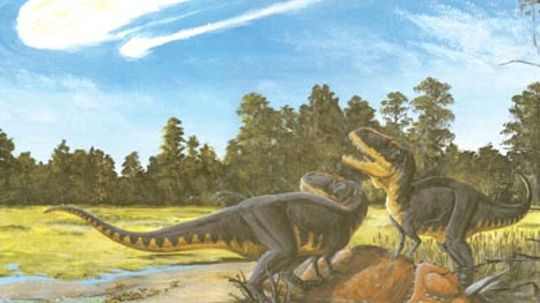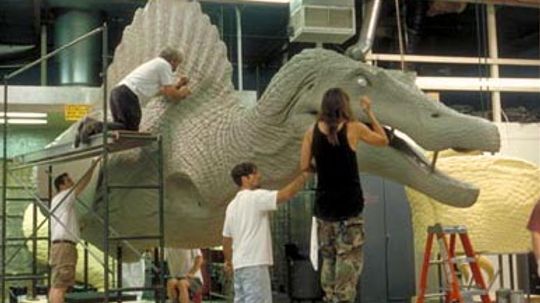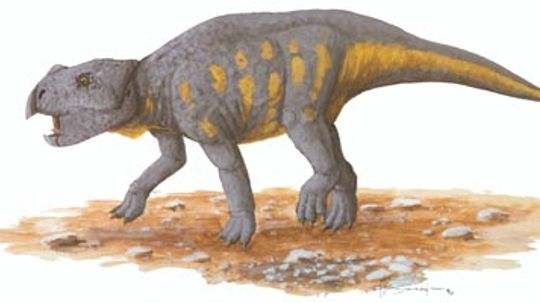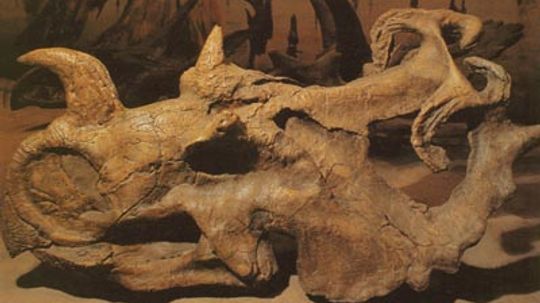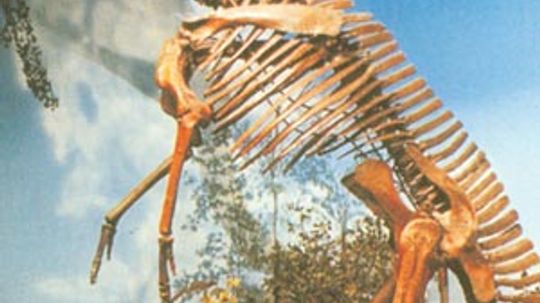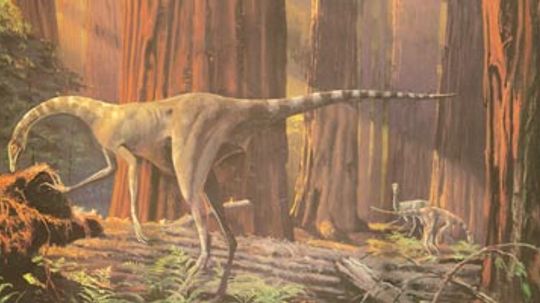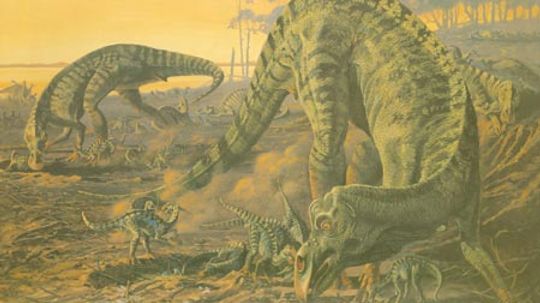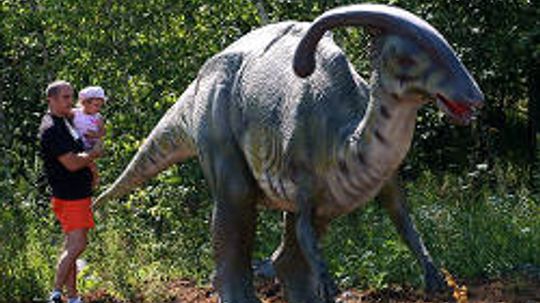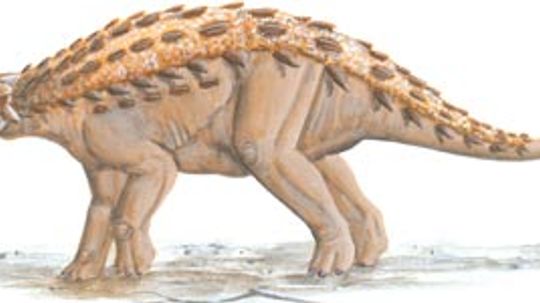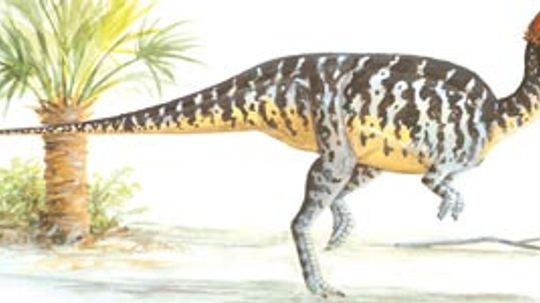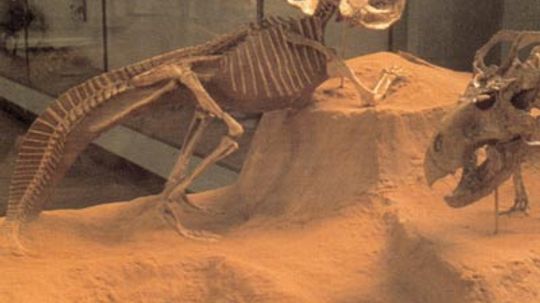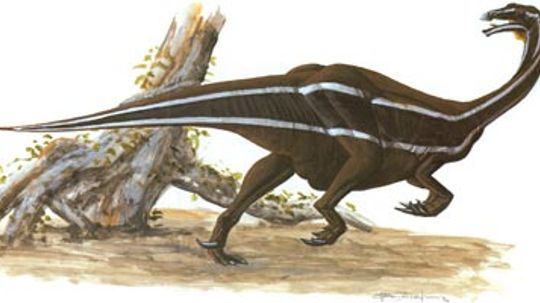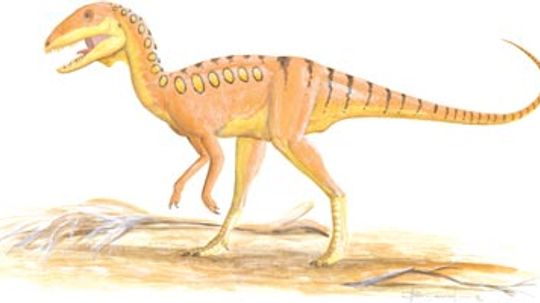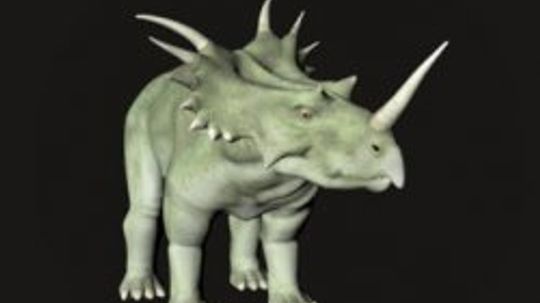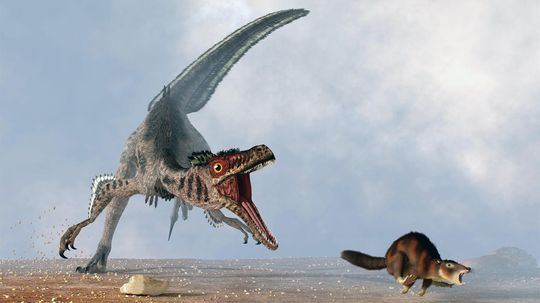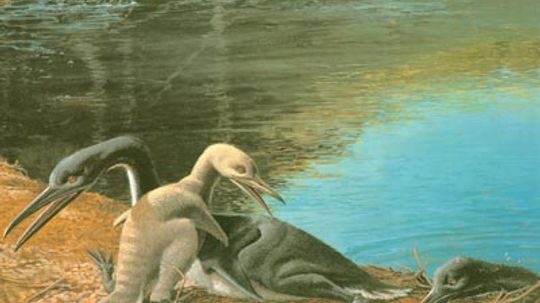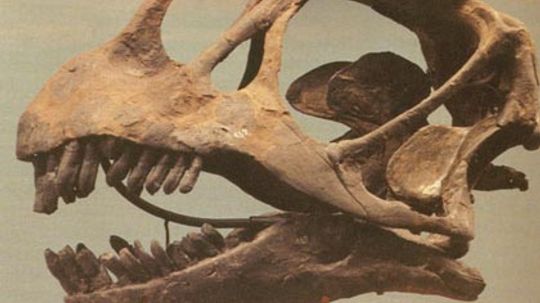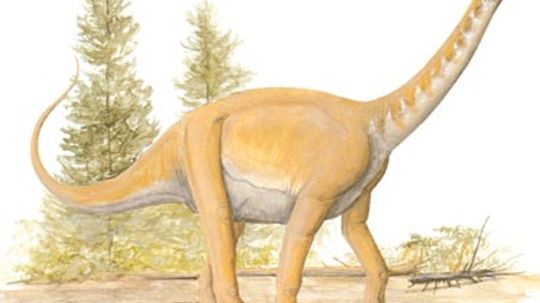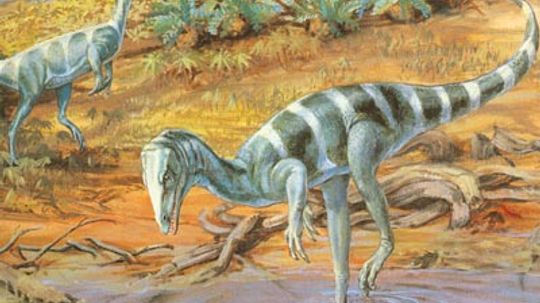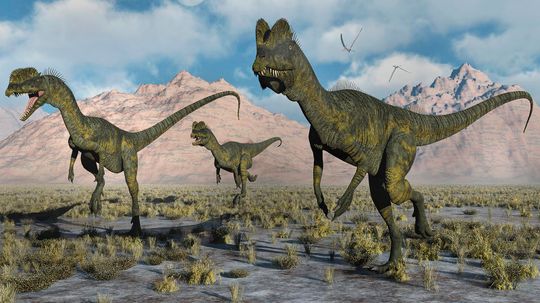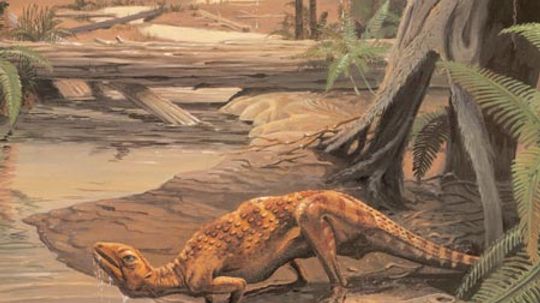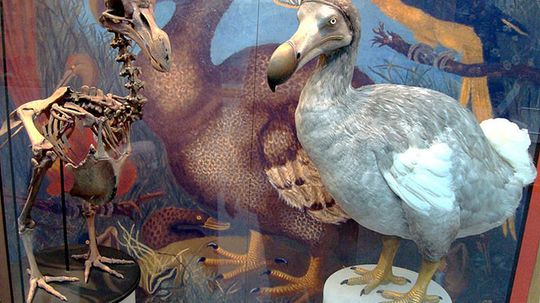Extinct Animals
Extinct animals are those species which are no longer living. This group includes prehistoric animals like dinosaurs and ice-age mammals, as well as moden species like the Dodo.

What Was the Biggest Dinosaur? Here Are the 4 Best Estimates
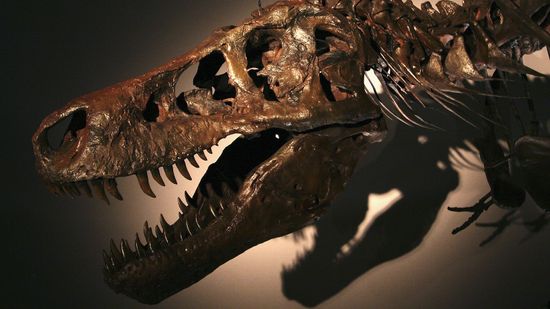
T. Rex Didn't Kiss and Tell, But May Have Had Lips
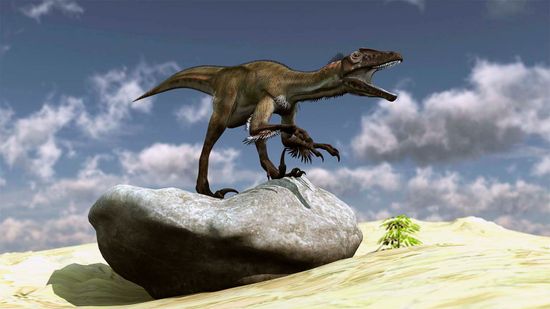
Utahraptor: The Salty Saga of a Killer Dinosaur
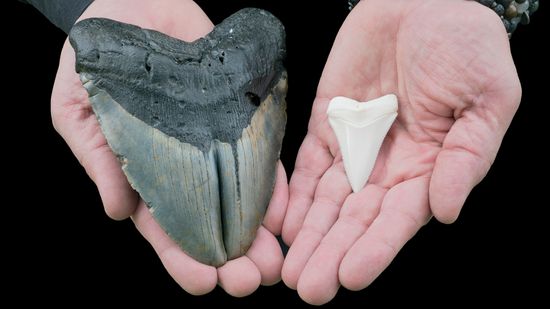
All About the Megalodon, Shark Giant of Prehistoric Times

Meet Palaeophis Colossaeus, the Largest Sea Snake of All Time

Meet Gigantophis garstini, an Enormous Prehistoric Snake
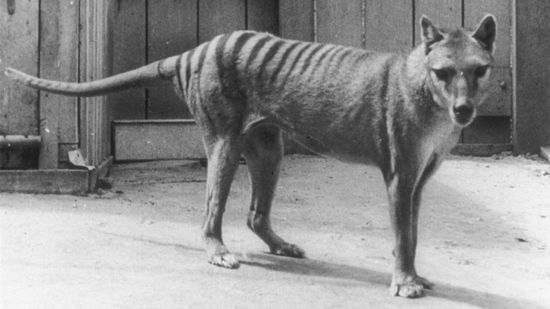
Real Life 'Jurassic Park'? Scientists Work to Bring Back Extinct Thylacine
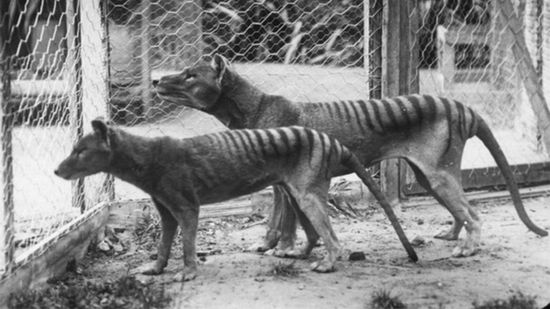
Once Thought Extinct, the Tasmanian Tiger May Still Be Prowling the Planet
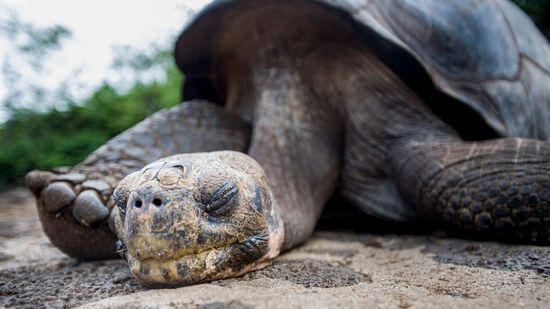
Lonesome George Lived to Be 100 Years Old. Genome Sequencing Is Figuring Out How
Learn More / Page 4
Dinosaurs became extinct at the end of the Cretaceous Period. How and why is a puzzle that paleontologists are trying to solve by studying fossils and rock formations. Learn more about the different extinction theories.
Interest in dinosaurs soared to new heights in the 1990s, thanks largely to the blockbuster film Jurassic Park. So too did dinosaur discoveries. Since 1990, more than 100 new dinosaur genera have been described and named. Learn more about recent dinosaur discoveries.
Bagaceratops rozhdestvenskyi was a small protoceratopsian with a big name: "baga" is the Mongolian word for "small," "ceratops" means "horned face," and the species name is in honor of Russian paleontologist A. K. Rozhdestvensky. Learn more about Late Cretaceous dinosaurs.
Advertisement
Centrosaurus, which means "sharp-point reptile," was named by Lawrence Lambe in 1902 from specimens found along the Red Deer River in Alberta. A number of complete skulls and skeletons have since been discovered. Learn more about the Centrosaurus.
Corythosaurus, the "corinthian helmet reptile," was one of the most abundant duckbilled dinosaurs from the Late Cretaceous of western North America. Originally found and named by Barnum Brown of the American Museum of Natural History, Corythosaurus is also one of the best known of all dinosaurs.
Dromiceiomimus ("emu mimic") has been found both in the Late Cretaceous Horseshoe Canyon and the Judith River Formation of Alberta. It is very similar to Struthiomimus and Ornithomimus, but had much larger eyes and longer, more slender arms. Learn more about the Dromiceiomimus.
Since it was named in 1979 by John Horner and Robert Makela, Maiasaura has become one of the most famous dinosaurs. It has provided information about how it cared for its young and the early development of dinosaurs. Learn more about the Maiasaura.
Advertisement
Known from only a single skull and jaw from Montana and three teeth from South Dakota, Nanotyrannus was first thought to be an Albertosaurus. But it was recently redescribed because it was different in many ways from Albertosaurus.
Panoplosaurus is known only from two partial skeletons, one of which preserves some of the armor the way it was in life. This skeleton shows that Panoplosaurus was unusual among nodosaurids because it did not have spikes on the sides of its neck.
Parasaurolophus was an interesting-looking dinosaur. While it looked normal from the neck down, it looked almost as if it had a trombone on its head. And in a way, it did.
Pinacosaurus was one of the first armored dinosaurs found in Asia. An expedition from the American Museum of Natural History went to Mongolia to search for traces of early man; instead they found dinosaur eggs and skeletons.
Advertisement
An almost complete skull and most of the skeleton were found for Prenocephale. It was collected during the Joint Polish-Mongolian Expeditions to the Gobi Desert. The animal was named and described in 1974.
Protoceratops andrewsi was discovered in Mongolia in 1922 by an expedition from the American Museum of Natural History led by Roy Chapman Andrews. Its genus name means "first-horned face," and its species name was in honor of the expedition's leader.
Segnosaurus galbinensis, or "slow lizard from Galbin" (a region of the Gobi Desert), was first described by Mongolian paleontologist Altangerel Perle in 1979. It was an unusual saurischian that he classified in its own family, the Segnosauridae.
The paleontological expeditions into the Turpan Basin in 1964-1966 turned up several interesting and unusual dinosaurs, ilncuding the Shanshanosaurus huoyanshanensis. Learn more about the Shanshanosaurus and other Late Cretaceous dinosaurs.
Advertisement
Styracosaurus was discovered in 1913 in the Belly River Formation of Alberta by Charles Sternberg. Lawrence Lambe named this animal Styracosaurus albertensis, which means "spiked reptile of Alberta," for its unusual neck frill.
The first two Torosaurus specimens were a pair of skulls found in Wyoming in 1891 by John Bell Hatcher. They were described by Othniel Marsh later that same year. These two skulls were named Torosaurus latus and Torosaurus gladius.
The Velociraptors in "Jurassic Park" were roughly the size of humans. In reality, they were about the size of an average turkey.
By Mark Mancini
Types of dinosaurs include the lizard-hipped dinosaurs and the bird-hipped divisions of dinosaurs. Both of these types of dinosaurs probably shared a common ancestor during the Middle Triassic. How else are these dinosaurs related?
Advertisement
Dinosaur bones are all we have to study what these animals looked like and how they lived. Some of the most important dinosaur bones that paleontologists study come from the skull. Why is the skull so important?
Barapasaurus is named for a word meaning "big leg" in a local dialect in central India. This large dinosaur was a herbivore with large flat teeth that are ideal for cutting or crushing vegetation. What did this dinosaur look like?
One of the most unusual predators is that of Coelophysis. It was only slightly larger than a turkey and had a long slender tail and a mouth full of knife-edged teeth. What was this dinosaur's behavior like?
Perhaps no other beast has been more wildly mischaracterized in popular culture than the crested predator Dilophosaurus.
By Mark Mancini
Advertisement
Scutellosaurus was a very unusual dinosaur because it was a two-legged dinosaur that had armor. Most armored dinosaurs walked on all fours. Many scientists believe this dinosaur to be the ancestor of later larger armored dinosaurs.
Although it may be long extinct, this quirky bird continues to amaze scientist. The latest discovery? An awesome “musket ball” weapon located on the tip of its wing structure. Could our world once again include this big, old flightless pigeon?
